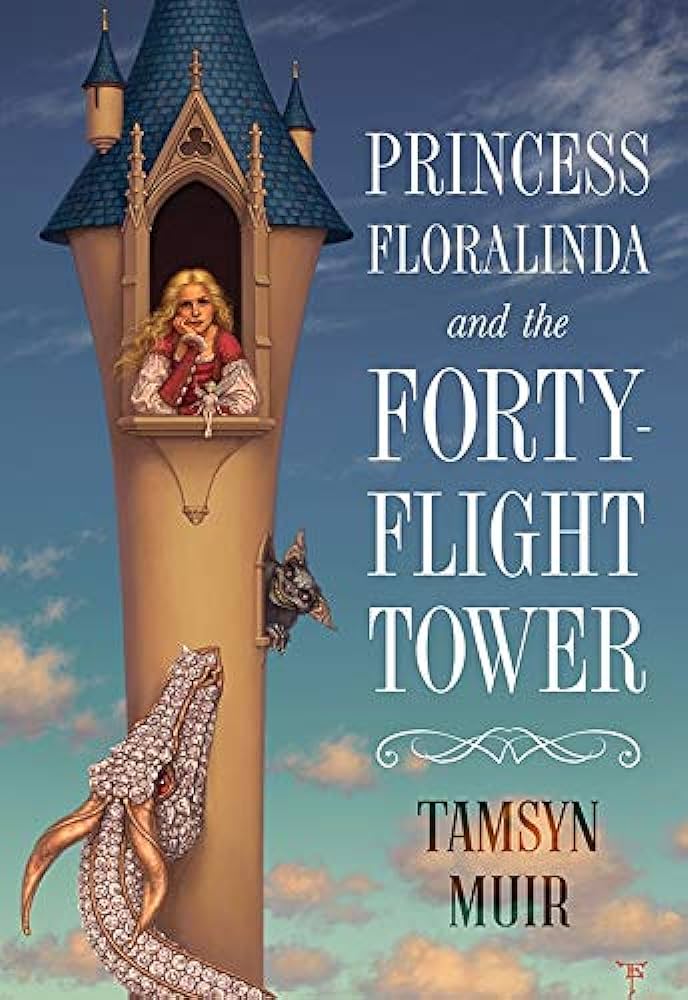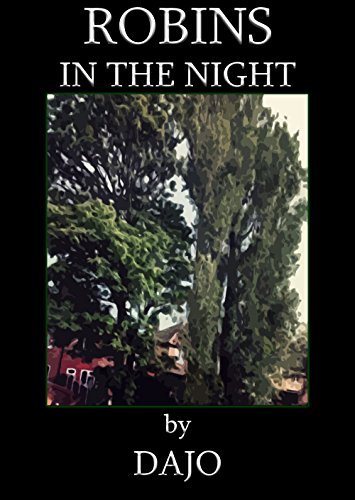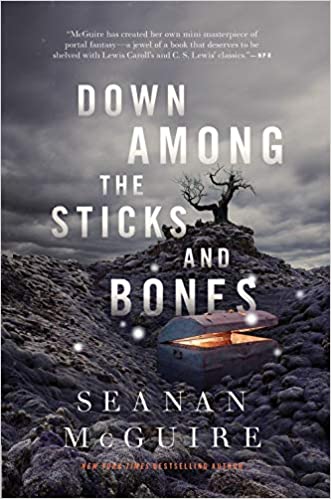Tink and Wendy sets the story of Peter Pan with a small twist that changes everything: instead of bringing the Darling siblings into their world, Peter and Tink stay in our world. As Peter brings his chaotic brand of fun to their dour lives, Tink grows more and more concerned over the impact this will haveRead More
How to Un-Princess: Princess Floralinda and the Forty-Flight Tower by Tamsyn Muir
Amazon Affiliate Link When I first picked up the fantasy novella Princess Floralinda and the Forty-Flight Tower by Tamsyn Muir in 2020, I knew that I’d be coming back to it for more. Because I’m more of a science fiction person, I wasn’t sure what to expect when I bought it; I knew I likedRead More
Sam reviews Robins in the Night by Dajo Jago
I first read Robins in the Night by Dajo Jago shortly after it came out in 2015. The literary landscape of lesbian fantasy novels was far scarcer even seven years ago than it is today; the YA publishing engine hadn’t yet realized the market it could exploit, and stumbling upon even a halfway decent bookRead More
Sam reviews Burning Roses by S. L. Huang
Amazon Affiliate Link | Bookshop.org Affiliate Link I don’t want to spoil too much about Burning Roses by S.L. Huang, because first and foremost it is short. It is a proper novella, clocking in at just over 150 pages long. If you can get your hands on this little volume, I recommend you slap onRead More
Rachel reviews Not Good For Maidens by Tori Bovalino
Amazon Affiliate Link | Bookshop.org Affiliate Link A retelling of one of the nineteenth century’s queerest poems, Tori Bovalino’s new novel Not Good for Maidens (June 21, 2022) is a fast-paced paranormal adventure-thriller that quickly became one of my favourite books of the year. The novel adapts and retells Christina Rossetti’s famous Victorian poem, “Goblin Market” (1862). NotRead More
Sam reviews Huntress by Malinda Lo
Amazon Affiliate Link | Bookshop.org Affiliate Link Winter is finally here, which means it’s perfect weather for me to re-read Huntress by Malinda Lo again. I’m not sure exactly how many times I’ve read this book, but it must be close to a half-dozen—a number that stands out even for me, especially for a YARead More
Marieke reviews Down Among The Sticks and Bones by Seanan McGuire
For any of you not familiar with Seanan McGuire’s work, she is a veritable master of remixing fairy tale tropes and patterns (and other genres too), on the same level as someone like Neil Gaiman, while of course giving it her own twist every time. In this case, the main two characters are twin sistersRead More
Mo Springer reviews Cinderella is Dead by Kaylynn Bayron
200 years ago, Cinderella died. Now, all the girls of the kingdom are forced to reenact her fairytale, forced into marrying men who mistreat them and discard of them as they please. But is there any truth in the story the system of cruelty is based on? Sophia is in love with Erin, who wantsRead More
Rachel Friars reviews Cinderella is Dead by Kalynn Bayron
Kalynn Bayron’s Cinderella is Dead is the queer fairy-tale retelling we needed in 2020. Bayron’s novel is doing amazing things for queer fiction, fantasy, and YA. If there’s anything we need more of, it’s books like this, and more from Bayron herself. It’s been a long time since we’ve seen a Cinderella with queer girls.Read More
Mary reviews Cinders by Cara Malone
Since she first moved to Grimm Falls, Cyn Robinson has lived in the shadow of her stepmother’s disapproval, her stepbrother’s resentment, and her father’s inability to fully accept her mother’s death. She has also lived with the unrequited love for Grimms Falls royalty, Marigold Grimm. For a long time now, Mari has been trying toRead More




